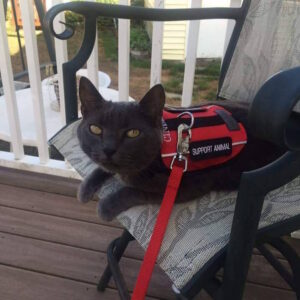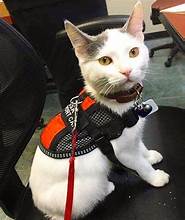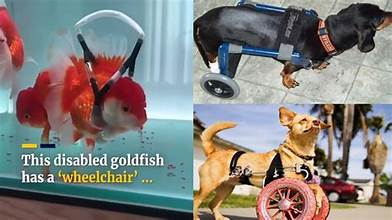Cats, with their calming presence, soothing purrs, and comforting companionship, are often overlooked as emotional support animals (ESAs). However, they can make incredible ESAs, each with unique qualities that can bring comfort and mental well-being. This guide will walk you through the steps and considerations in transforming your feline friend into a source of comfort and mental well-being.
What Is an Emotional Support Animal?
An Emotional Support Animal (ESA) is a pet that provides therapeutic benefits to individuals dealing with mental health conditions such as anxiety, depression, PTSD, or panic disorders. Unlike service animals, ESAs do not require specialized training to perform specific tasks. However, they must be well-behaved, calm, and bonded with their owner to fulfill their support role effectively.
Step-by-Step Guide to Training Your Cat as an ESA
1. Understand the Legal Requirements
Before embarking on any form of ESA training, it’s crucial to have a solid understanding of the legal framework:
- You’ll need a legitimate ESA letter from a licensed mental health professional stating that you need an emotional support animal.
- ESAs are protected under the Fair Housing Act, allowing them to live with you in housing where pets are not typically allowed.
- Note: ESAs do not have public access rights like service animals (e.g., they may not be allowed in restaurants or stores).
2. Choose the Right Cat
Not all cats are suited to be ESAs. Ideal emotional support cats are:
- Affectionate and people-oriented
- Calm and tolerant of touch
- Comfortable with routine and changes in environment
You’re off to a great start if your cat fits this description. If you’re considering adopting, observe a cat’s temperament before committing.
3. Build a Strong Bond
Emotional support cats need a deep connection with their owner. Ways to strengthen your bond include:

- Spending quality time daily (petting, grooming, playing)
- Positive reinforcement training using treats and affection
- Creating a safe and enriching environment with cozy spaces, toys, and scratching posts
4. Basic Training for Emotional Support Cats
While cats don’t need to perform specific tasks, basic training helps them behave calmly and predictably:

- Litter box training: Keep it clean and consistent
- Socialization: Gradually expose your cat to various people and environments to reduce anxiety
- Desensitization to stimuli: Get your cat used to noises, carriers, and car rides if travel will be necessary
- Leash training (optional): Some ESA owners train their cats to walk on a harness and leash for outings
5. Recognize and Reinforce Positive Behavior
Use positive reinforcement to encourage calm, supportive behaviors:
- Give treats and praise when your cat lays on your lap, responds to your emotions, or stays calm during stressful situations.
- Avoid punishment—it can increase anxiety and damage the bond
6. Visit a Vet for a Health Check
Your ESA cat should be:
- Healthy and up-to-date on vaccinations
- Free from behavioral issues like aggression or chronic hiding
- Discuss spaying/neutering and diet with your vet for long-term wellness
7. Obtain an ESA Letter
Once your cat is ready and you’ve built a stable bond:
- Schedule an evaluation with a licensed mental health professional (therapist, psychologist, or psychiatrist)
- Be honest about your emotional health and how your cat supports you
- If approved, you’ll receive an official ESA letter, which is required to access housing accommodations.
What are the Benefits of Having a Cat as an Emotional Support Animal
- Soothing companionship during anxiety attacks or depressive episodes
- A structured routine that promotes better mental health
- Affection and purring may reduce blood pressure and stress.
- Non-judgmental presence that provides emotional grounding
Final Thoughts
Training a cat to be an emotional support animal doesn’t involve complex tasks. It’s a journey that requires patience, bonding, and consistency. If your cat provides you with genuine comfort and peace of mind, they may be the perfect ESA companion. With proper care, love, and an ESA letter, your feline friend can officially support your emotional well-being and become an essential part of your healing journey.
Need to Get an ESA Letter?
Make sure to consult a licensed mental health professional either in person or through verified telehealth services.
Looking for Training Supplies?
Here are a few helpful tools to get started:




